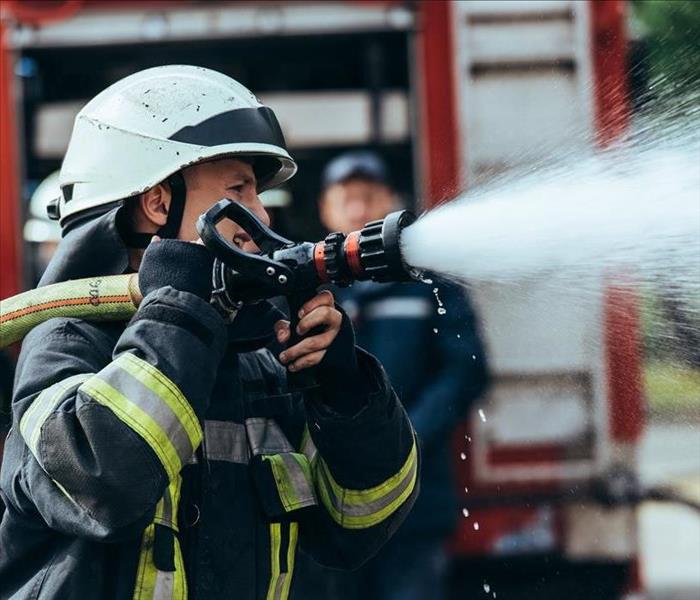Steps of the Fire Damage Mitigation Process
10/22/2021 (Permalink)
The flames in a house fire can destroy a lot of your home in Pueblo, CO, in a very short amount of time. Important documents, furniture, clothing, and even the structure itself are likely to sustain fire damage. To further complicate matters, the water that firefighters use to put out the fire can also destroy parts of your home. Full mitigation involves addressing both types of damage to make your house whole again.
Steps That Fire Restoration Specialists Must Take.
Assess Fire Damage
When the cleanup team arrives, the first action step is to map out the rest of the process. The members of the team look at several factors:
- The extent of the damage
- Size of the affected area
- Time passed since the fire
- Number of belongings involved
All of these factors impact not only how much work needs to be done but also the timeline for completing it. This information, in turn, dictates how much the cleanup process is likely to cost. You may not be able to control all the factors, but the sooner you call for help, the more likely it is that technicians will be able to stop ongoing damage in its tracks.
Remove Excess Moisture
To take care of the water damage, all standing water must be removed from your house. This step occurs early in the process to help prevent secondary damage such as rot or mold growth. After industrial pumps extract water and debris, technicians can get a better look at the problems they left behind.
Tear Out Ruined Materials
No matter how quickly the flames are put out, they still leave behind quite a bit of fire damage. All ruined materials, including flooring, ceiling, walls, insulation, roof materials, and support beams, must be torn out. Technicians conduct this process methodically so that they don't compromise more of the structural integrity of the house.
Clean and Dry Remaining Structure
Once the water from the fire hose hits the flames and the burning structure, it is contaminated, which means everything that it touches must be disinfected. The mitigation team cleans the remaining parts of the house, getting rid of bacteria as well as soot and smoke damage. Then the entire space must be dried thoroughly.
Determine Salvageability of Belongings
Items that were removed along with ruined materials meet one of two fates. They are either cleaned so that they can be returned to your home, or they are discarded. Remediation experts have the training and experience not only to determine which items can be salvaged but also to clean them properly so that they are safe to use.
Restore Home
The final step of the mitigation process is restoring your home to its former glory. The technicians rebuild the structure and make sure the tile, paint, and wallpaper all have seamless finishes. The job isn't finished until your house is ready for you to move back in.
Taking care of the fire damage to your home is just one part of the restoration process. Understanding the importance of each step helps you set clear expectations for cleanup.





 24/7 Emergency Service
24/7 Emergency Service
